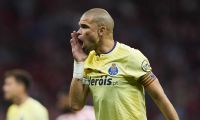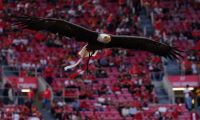
The Mercedes-Benz 540K (W29) is a car built by the German company Mercedes-Benz from 1936 to 1940.
Introduced at the 1936 Paris Motor Show, the car designed by Friedrich Geiger was a development of the 500K, itself a development of the SSK. Available as a two-seater cabriolet, four-seater coupé or seven-seater limo (with armored sides and armored glass), it was one of the biggest cars of its time.
The 500K's in-line 8-cylinder engine has been displaced to 5,401 cubic centimeters (329.6 in.). [2] It was powered by two pressurized updraft carburetors, developing 115 hp (86 kW). In addition, a Roots supercharger was attached, which could be attached manually for short periods, or automatically when the throttle was fully pushed to the ground. This increased power to 180 hp (130 kW), allowing a top speed of 170 kilometers per hour (110 mph).

Power was sent to the rear wheels via a four-speed manual or five-speed manual that included timing in the first three gears. Vacuum-assisted hydraulic brakes kept the car under the driver's control.
The 540K had the same layout as the 500K chassis, but was significantly relieved by replacing the 500K tube chassis with oval section tubes - an influence of the Silver Arrows racing campaign.
To meet individual customer wishes, three chassis variants were available, as for the 500K: two long versions with a wheelbase of 3,290 mm (130 in), differing in terms of powertrain and bodywork layout; and a short version with 2,980 mm (117 in). The long variant, called the normal chassis with the radiator directly above the front axle, served as the basis for the four-seat convertibles, the 'B' (with four side windows) and the 'C' (with two side windows), and for touring cars and sedans. The shortest chassis was for the 'A' two-seat cabriolet, mounted on a chassis in which the radiator, engine, cab and all rear modules were moved 185 mm (7.3 in.) From the front axle. ]
The Sindelfingen plant employed 1,500 people to create the 540K, and allowed for a great deal of customization by the owner, meaning that only 70 chassis were built by independent manufacturers. [3] Owners included Jack L. Warner of Warner Brothers film studios.
With the outbreak of World War II in 1939, the engine's additional propulsion to 5,800 cubic centimeters (5.8 l) for a 580K was aborted, probably after only one of these cars was manufactured. [4] Chassis production ceased in 1940, with the last two being completed that year, and the previous chassis were still being maintained at a constant rate during 1940, with smaller numbers being completed in the period 1941 to 1943. The bodies of Regular replacements were ordered in 1944 for some cars.

Special saloon (W24)
Mercedes-Benz 540K (W24)
On top of normal and roadster cars, 12 special cars were developed in an extended chassis length with a wheelbase of 3,880 mm (153 in). All of these cars were developed for the Nazi hierarchy, like six-seat convertible saloons. To enable armor, these cars developed the De Dion rear suspension. Due to its greater weight, its top speed was 140 km / h (87 mph).
After the attempted assassination of Reinhard Heydrich in Prague at the end of May 1942, the Reich Chancellery would only use armored cars for ministers and leaders of friendly forces. In addition to 20 large Mercedes-Benz 770s in 1942, they ordered another 20 540Ks developed as two armored salons. These were delivered in 1942 and 1943. An additional order for 17 armored halls was placed in late 1943, and these were delivered in April 1944. One of these cars was given as a gift from Adolf Hitler to Ante Pavelić, leader of the Independent State . from Croatia. After the war, this car was captured and used first by Ivan Krajacic and then by Josip Broz Tito.

Hermann Goering "Blue Goose"
In 1936, Mercedes-Benz introduced the 540K special, called 540Ks. Based on the shorter 2,980 mm (117 in) chassis, its body has been carefully crafted. Its price of 28,000 Reichsmarks, about RM6,000 above the price of standard models, meant that only 32 were built.
In 1937, Reichsmarschall Hermann Goering ordered a 540Ks, in his favorite color of sky blue with the family coat of arms on both doors. It included armored sides and bulletproof glass. Nicknamed "Blue Goose", Goering was often photographed in the car.
On May 4, 1945, the US Army, Company C, 326 engineers from the 101st Airborne Division "Screaming Eagles", entered Berchtesgaden and, upon finding the car, took possession. Major-General Maxwell Taylor used the car as his command vehicle in West Germany until it was ordered by the US Treasury. Sent to Washington, D.C., he successfully visited the United States on a victory bond tour. [5] In 1956, the car was auctioned by the US Army at Aberdeen Proving Grounds, Maryland, and sold to Jacques Tunick of Greenwich, Connecticut, with a high bid of $ 2167.
Mais sobre este texto de partidaÉ necessário o texto de partida para obter informações de tradução adicionais

In 1958, Tunick sold the car to the private collection of veterinarian Dr. George Bitgood Jr., who repainted it in black and re-plated chrome. Kept private, Bitgood only exhibited it once, at the 1973 city fair in Durham, Connecticut. After Bitgood's death, "Blue Goose" was shown by his family in June 2002 at the 101st Airborne Meeting in Fort Campbell, Kentucky. The car was then sold to Carnlough International Limited of Guernsey, with the agreement that it would be restored to its condition "as found" in Berchtesgaden.












































 LINKS E SITES IMPORTANTES
LINKS E SITES IMPORTANTES


